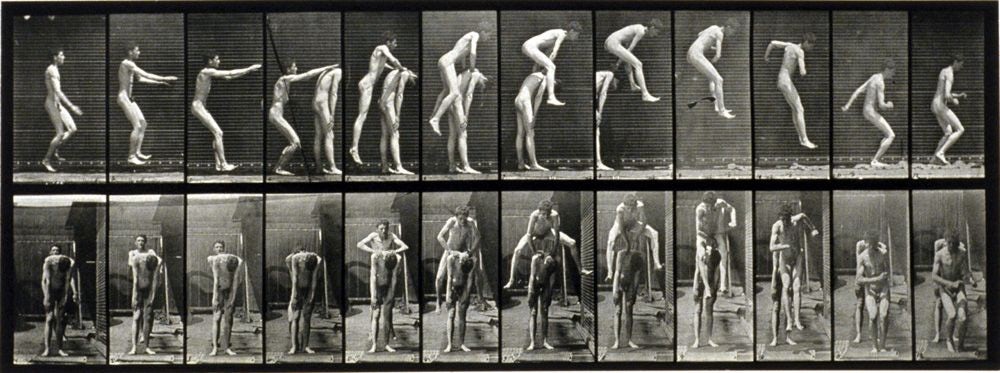
Henrik Håkansson and Eadweard J. Muybridge
2006.05.06 - 06.17
The speed at which things move robs from our gaze any chance it has of scrutinizing motion in successive states, of observing the specific way things behave, of analysing the kinematics of bodies and objects. With the invention of photography, however, came a new epistemological paradigm: one enabling the freeze-framing, if you will, of our images of the world. Paradoxically, in an age (the Industrial Revolution) when everything was moving faster, we developed the ability to observe things slowed down—an ability crucial to scientific study. Both the photographs of Eadweard J. Muybridge and the video installations of Henrik Håkansson invite us to share in an experience of that ability. Their images capture our gaze and provoke an unexpected vision of time and motion.
Between 1877 and 1879 Muybridge famously set out to prove the notion that all four of a galloping horse’s hooves are sometimes aloft. With help from engineers, he developed a system of multiple cameras that could “dissect” a horse’s movements at full gallop. His invention, chronophotography, gave us a new tool for the study of human and animal locomotion in enabling movements to be broken down and fixed as individual, sequential images. Beginning in 1884, Muybridge, by then employed at the University of Pennsylvania, took thousands of such pictures of people and animals, his subjects tripping shutters on a bank of cameras one after the other. The motion thus captured is minimal, sometimes difficult to perceive—a rift in the temporal logic of the actions that unfolded. The twelve plates brought together here—loaned by the Musée d’art de Joliette—were part of this vast undertaking, entitled Animal Locomotion.
The advent of photography, cinema and then video inarguably transformed our ways of seeing the natural world. Before we invented any of the technological devices we now use to capture and amplify its images and sounds, we observed nature directly, in real time. Today, such recordings are unavoidable mediators of our relationships to the world. The observation of nature and such processes of mediation are at the core of Sweden-born Henrik Håkansson’s artistic vision. He employs the methods of scientific research—surveillance cameras, close-ups, slow motion, absence of human intervention—to extend, in time and space, an aural and visual experience of the animal world. As we view them, however, we are reminded of the distance separating us from these fascinating spectacles.